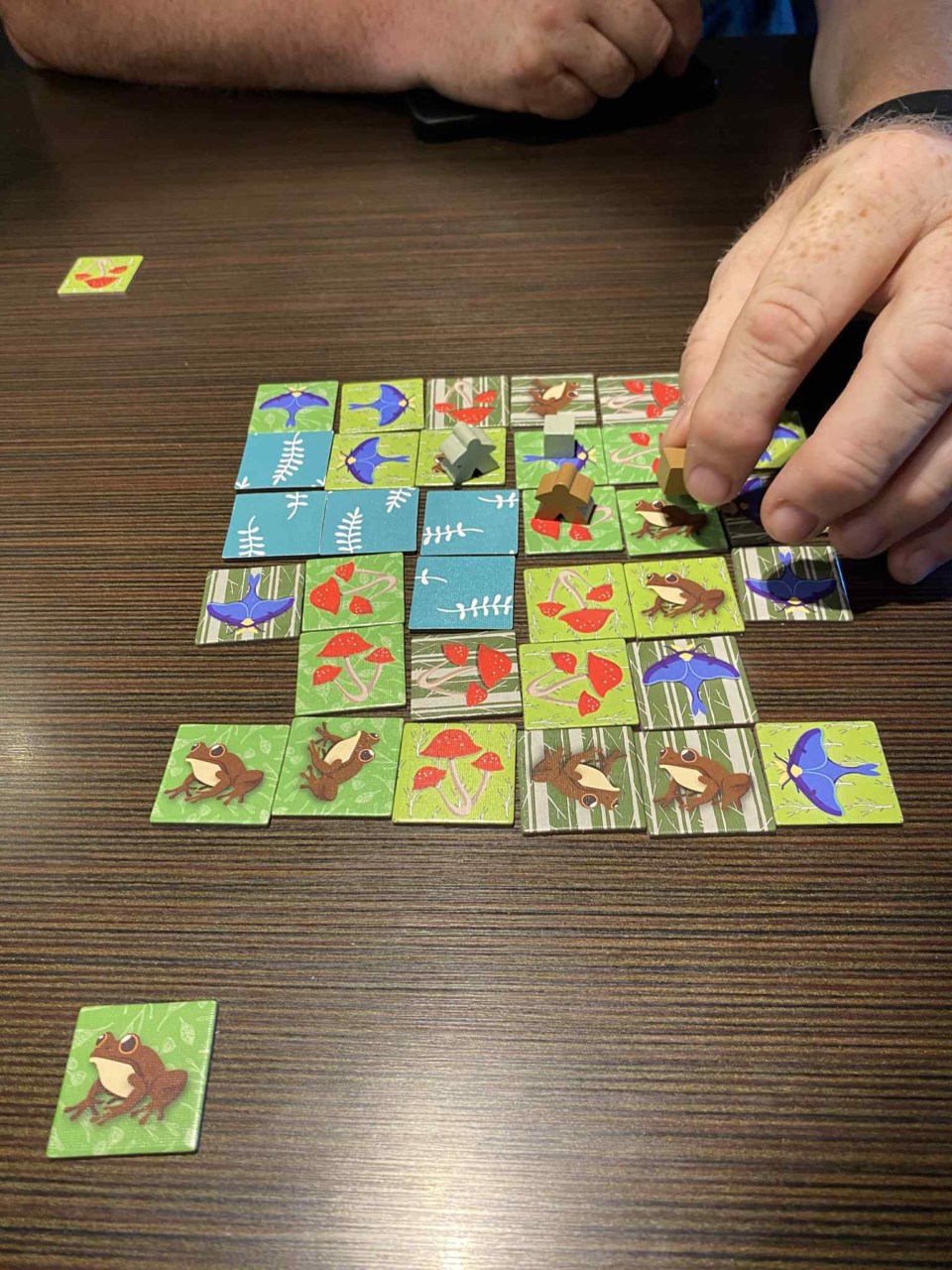YORKTON - With a small box game it’s always sort of a coin flip with most having a ‘mid-shelf’ ceiling meaning they are OK games, but maybe not one you’d reach for regularly.
And, then there are those that climb just a bit higher, not maybe to share space with chess, Hive or Yinsh, but ones with a definite interest that will draw you back.
The Mire from designers Shadoe Konicek, and Sydney Whalen and published by Waterbear Workshop is one.
The Mire hits the table in a flash.
You lay out the 36 tiles in a 6x6 grid, and each player – this one is for two – places their piece on an edge tile, and it’s game-on.
Each tile has a dual feature – its picture (frog, moth or mushroom) and a background, one of three.
Players take one tile as their ‘pattern’ and on a move must land on either the game icon or background.
Making the game more than a move and win scenario players can on their turn move, swap, and lock down tiles with an eye to improving their own position, or thwarting an opponent’s move.
The end-game goal is making your opponent unable to move on their turn, so you win.
“We think players can expect a highly replayable game that they can carry in their pocket (thanks to the provided bag) and will be light and casual or strategic and competitive, depending on their mood or opponent. It’s also really easy to teach, so you can find that opponent anywhere,” said Whalen via email.
“. . . The game itself offers quick setup and layered strategy that you don’t need to be a chess master to fully engage with. It invites players to play defensively or offensively. It definitely provides opportunities to be mean, but it can also be treated casually enough that you’re sort of half-playing while you have a conversation.”
That said Whalen said people have shown they approach The Mire in different ways.
“We’ve heard this game described as simple and quick by some and deeply strategic by others. We’ve seen people fly through it or take 5+ minutes to make a single choice. We’ve heard it referred to as cozy, cutthroat, and everything in between,” she said.
As designers the duo came to creating the game from their own gaming interest.
“We also love games. We actually kind of need them sometimes,” said Whalen. “When we travel, go to restaurants or local breweries, even when we go to the movies or a local market, we almost always bring at least one game. You never know when there’s enough downtime to take each other on. We started collecting games that were quick, compact, and well-suited to two players. As The Mire evolved, we saw in it the exact sort of game we love to travel with. It became one of our core themes in marketing the game - how you could play it on a tree stump during a hike or waiting for the train to go downtown. So I guess you could say we were subconsciously trying to make a game that we could take places and we sort of accidentally became our own target market.”
Getting The Mire just right took time.
“One of our biggest challenges in creating a game that has no luck-based function was that a perfectly played game would literally never end. We didn’t want the game dependent on one player making a mistake, because that also introduces a lot of frustration. That’s when we added the disappearing board, which we’ve come to view as one of the game’s strongest selling points. It creates tension and forces an ending while also adding another layer to the strategy,” said Whalen.
Gamers can expect more from the design duo too.
“We play test dozens of games and have a handful in various stages of development that were started well before The Mire,” offered Whalen. “But The Mire started coming to fruition at a pivotal moment in our business development. Having pitched our first game to a handful of companies with no luck, we were starting to explore the idea of being not just game designers, but game publishers. The Mire offered an opportunity to learn about the entire process from final design and manufacturing through distribution and marketing. Because it was small and component light, we could afford a complete print run (using LongPack) out of pocket. We were also able to keep our MSRP low compared to a lot of games hitting the market these days, making it easier for us to sell without having a ton of credibility yet. Of course, that’s not why we designed The Mire, but it is why we moved it up the ladder past other games we’d been working on for longer and turned it into our debut publication.”
The Mire ultimately offers more depth of play that a first glance might suggest, but plays quick enough to be one of those portable little gems you will truly appreciate in your collection.
Just beware this is a ‘just one more’ or make it a best-of-seven game.
Check it out at waterbearworkshop.com






